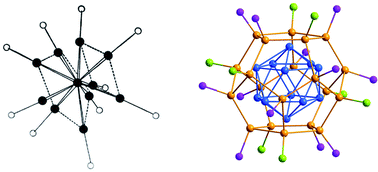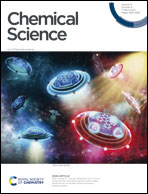Metalloid gold clusters – past, current and future aspects
Abstract
Gold chemistry and the synthesis of colloidal gold have always caught the attention of scientists. While Faraday was investigating the physical properties of colloidal gold in 1857 without probably knowing anything about the exact structure of the molecules, 150 years later the working group of Kornberg synthesized the first structurally characterized multi-shell metalloid gold cluster with more than 100 Au atoms, Au102(SR)44. After this ground-breaking result, many smaller and bigger metalloid gold clusters have been discovered to gain a better understanding of the formation process and the physical properties. In this review, first of all, a general overview of past investigations is given, leading to metalloid gold clusters with staple motifs in the ligand shell, highlighting structural differences in the cores of these clusters. Afterwards, the influence of the synthetic procedure on the outcome of the reactions is discussed, focusing on recent results from our group. Thereby, newly found structural motifs are taken into account and compared to the existing ones. Finally, a short outlook on possible subsequent reactions of these metalloid gold clusters is given.



 Please wait while we load your content...
Please wait while we load your content...